Dwayne ‘The Rock’ Johnson seems to be shifting the Hollywood’s crust this year with his earlier outing as Luke Hobbs in the seventh installment of Fast and Furious, Furious 7 which went on to be 2015’s highest grossing movie at $ 1.5 billion. His recent epic-disaster movie San Andreas too is firing records with an opening of $54.6 million giving the former WWE superstar his biggest solo-opening ever.
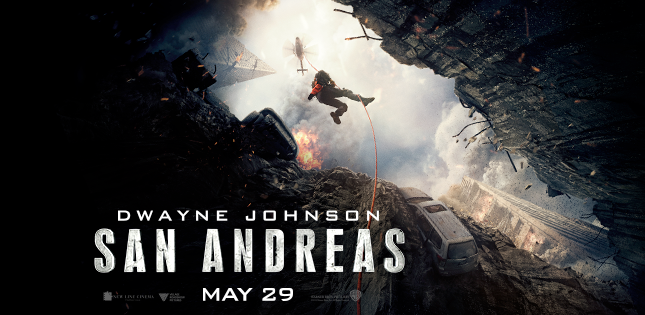
The last decade has been positively receptive to the catastrophic genre depicted on the big-screen, with millions spent by the production houses, high-profile A-listers roped in, all in the backdrop of an impending doomsday-type event. However, Hollywood wasn’t always this welcoming to the disaster movie genre. It was only in the late 1990s, with the advent of state-of-the-art visual effects at the disposal of the makers along with some true-story based plot-lines that catastrophes seemed to have caught the audiences’ attention and provided the creators with a motivation to spin some end-of the world events on the big screen.
The latest addition to the genre, San Andreas puts ‘The Rock’ (a rescue-chopper pilot) right into the midst of a massive earthquake in California. While the epic-disaster flick is surely multiplying the numbers at the box office, the entire credit doesn’t belong to Johnson’s gravitas but also to the cutting edge technology supporting the plot. With over 1,300 VFX shots Brad Peyton focused on getting as much action in the movie as possible with a number of terrifying stunts performed by Dwayne himself. From daring chopper rescue sequences to the catastrophic tsunamis shattering the inhabitants abode in California, San Andreas blends technology with emotion aesthetically.
While San Andreas is shaking up the theatres we at AnimationXpress.com list down 7 disaster movies with stunning visual effects that have successfully sold some epic-catastrophes over the ages.
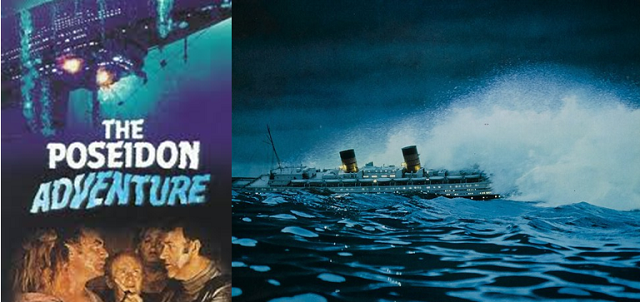
The Poseidon Adventures (1972) – Lets jog back to the time when the special effects were raw, visual effects were conquered using miniature models of extravagant shots and sets were actually constructed as CGI was far from being an affordable route for creators.
Adapting Paul Gallico’s novel, The Poseidon Adventures, director Ronald Neame made a break-through for both the producer Irwin Allen and the then faltering 20th Century Fox Studios.
Tagged as ‘Hell Upside Down’ the movie, The Poseidon Adventures centers on the luxurious liner SS Poseidon which on her final voyage from New York City to Athens is overturned by a gigantic tsunami following which the movie captures the desperate attempts to safety of the survivors trapped inside.
With not much liberty at Computer generated effects, the production of the movie was done the old-school way. To bring on the practical effects of the tsunami wave, thousands of gallons of water was actually displaced from large 30 feet tanks and the cameras capturing at seven times the normal speed were precisely placed to capture the effects. Even the scene showing the liner over-turning required some great art and technology and the production house did shelve out $35000 to build a 21 feet long model rigged to a mechanical mount to give the natural capsize effect. Naturally with some over the top- novel special effects technique, the film won the Academy Award for Special Effects along with four other categories and amassed over $100 million in its world-wide box office collections and via rentals.
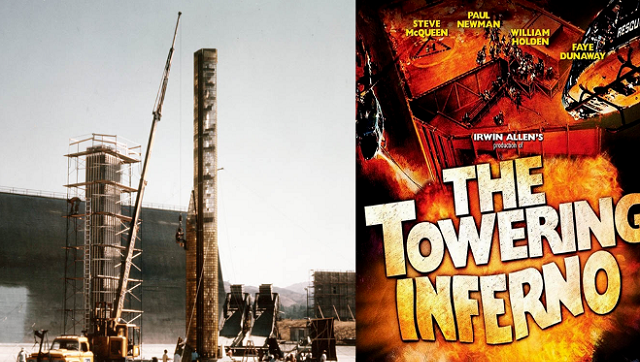
The Towering Inferno (1974) – If the waters were not menacing enough in The Poseidon Adventures, then Irwin Allen’s play with the blazing fires in The Towering Inferno (1974) definitely defines the disaster genre of the 1970s. Starring Pawl Newman and Steve McQueen, The Towering Inferno in spite of being in the pre- CG era is best remembered for its incredible and realistic special effects.
Adapted from a couple of novels, The Tower by Richard Martin Stern and The Glass Inferno byThomas N. Scortia and Frank M. Robinson, the man-made disaster movie raked in nearly $140 million world-wide against a budget of $14 million. The Towering Inferno grips you right till the end as the world’s tallest tower (Not Burj Khalifa!) is built on man’s greatest weakness, greed which compromises gravely on the safety of the tower. Result is a simply electrical fire ruins man’s largest creation and the gripping plot of how the fire fighters must battle the fire to rescue over 300 people from the fire traps that explode and spell out disaster at every floor.
The movie won the Academy Award for Best Cinematography and all that credit comes backed up by special effects created throughout the movie. From building a 70 foot tower model to and other miniature models to assembling the blue screen composites and matte shots and also undertaking the task of building and filming the fires from various creative angles, The Towering Inferno scaled across the hearts of audiences with some real over the top special effects.
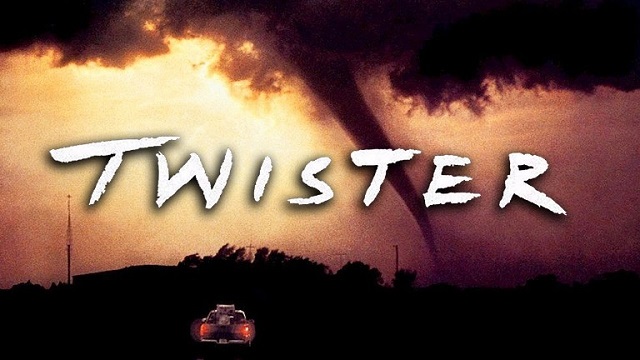
Twister (1996) – Postthe blazing heat of The Towering Inferno, the disaster genre remained dormant for nearly two decades and it was only with Jan de Bont directed, Twister (1996) that disasters started to send shivers down the industry once again.
Based on a couple of storm chasers who created an advanced weather alert system, DOROTHY, to detect and study tornadoes, Twister puts the couple right into the cross-hairs of tremendously fierce tornadoes.
Academy nominated for the Best Visual Effects, the visual effects of Twister were produced by ILM who created over 300 shots under the supervision of Stefen Fangmeier. From the computer-displays of the storm chasers’ tech to digitally animating the tornadoes using the perfect blend of CG animation and compositing especially in the various hand-held shots through car-windshields, Twister revived the genre totally.
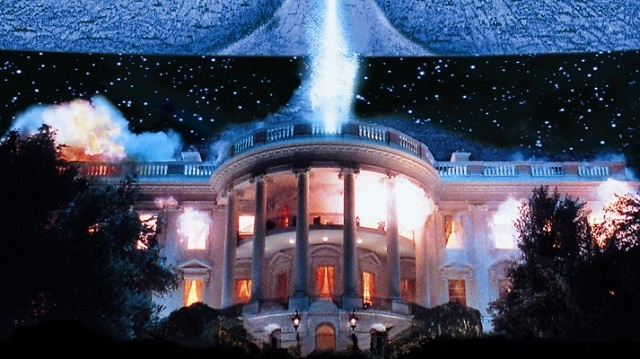
Independence Day (1996) – With Independence Day (1996) starring Will Smith, Bill Pullman, Jeff Goldblum, epic-disaster movie-maker, Roland Emmerich tasted success in the disaster-genre something which he still has clung on to. Loosely based on the War of the Worlds type of alien invasion, Independence Day puts the entire human race at the brink of extinction when a superior technologically advanced alien race is hell-bent on conquering our planet and it is up to Man’s will to survive that could only fight off this evil.
Beating Twister and Dragonheart, Independence Day won the Academy Award for Visual Effects which is well-deserved as it spent over $75 million on models and miniatures including the well-publicized scene of the destruction of the White House by the alien-UFO which was filmed using 9 cameras.
Backed by a pack of VFX studios and teams of artists, Emmerich established over 500 shots using CGI including the depiction of F-18 Hornets, debris, alien attackers, missiles, and light balls and the sheer amount of visual effects shots made it one of the biggest special effect movies of the 1990s grossing over $817 million world-wide.
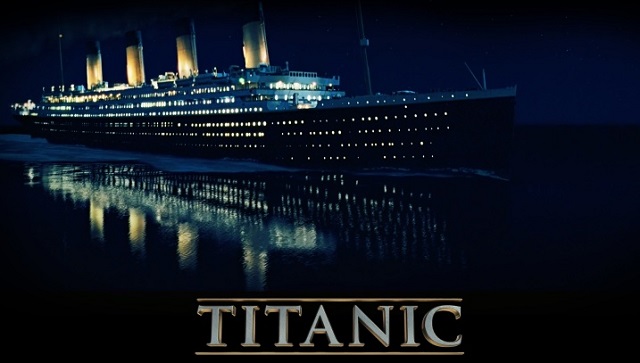
Titanic (1997) – 18 years hence and still James Cameron’s Titanic (1997) spells grandeur is all aspects. From holding 11 Academy Awards to the gigantic production costs of $200 million to holding the record of one of the top three highest grossers in Hollywood ($2.19 billion) to telling the epic love story brilliantly portrayed by Leonardo Dicaprio and Kate Winslet, Titanic struck the right chords on all notes.
Cameron was hell-bent to make an exact replica of the ‘unsinkable liner’ and this left no choice to 20th Century Fox but to buy 40 acres of oceanfront property in Baha, Mexico, build a Ł15 million facility called “the 100 day studio” to hold and film the 65 footer model. Massive tanks (90 feet deep and 800 feet wide) were constructed holding 17 million gallons of water and furnishing details were paid attention to, all along with generous use of computer graphics to enhance every shot. While most of the visual effects were produced by Digital Domain, Rob Legato, the VFX Supervisor for Titanic (and even Avatar) also brought in his expertise especially of the newly introduced motion-capture technology that scanned the faces of live people to digitally create the extras and stuntmen.
From digitally creating the oceanic waters, the passengers and the ship to roto-capturing live-action digital compositing to filming miniatures against a red-screen, Titanic in true sense left a legacy of rendering an epic-photorealistic movie using visual effects as the backbone.
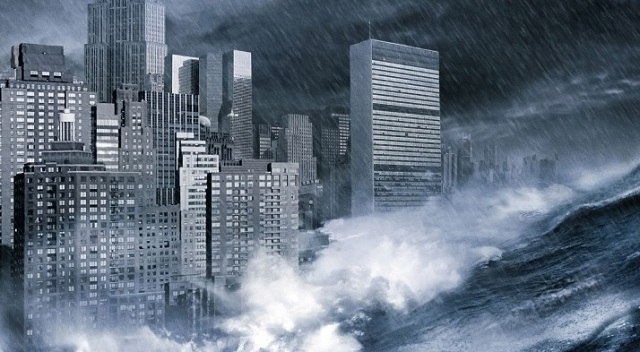
The Day After Tomorrow (2004) – Dawn of the 21st Century and Hollywood’s gone to an all new level with stunning and visually arresting special effects enhancing every bit of the viewer’s experience. Roland Emmerich again steps into the director’s chair for the climatic disaster-flick The Day After Tomorrow (2004).
Having warned the world of an impending doomsday Ice Age owing to the rapid global warming, a climatologist must make a daring cross-country trek to reach his son, trapped in the storm which plunges the half of the planet into a new Ice Age.
Awarded for Best Visual Effects by BAFTA and VES awards, The Day After Tomorrow generously used the Computer generated effects to depict most of the stunning, breathtaking visuals. From wiping out memorable landscapes of America using incredibly realistic natural calamities of tornadoes, earthquakes and floods, Emmerich managed to capture the viewers’ attention right till the end that threw the world’s most powerful nation into an Ice Age using the magic of computer generated imagery (CGI). 30 New York blocks were computer scanned to re-create the VFX shots and the use for the traditional technique of models was reduced to bare minimum.
Spawned over a budget of $125 million, the disaster struck movie grossed a decent $545 million in world-wide gross amassing good money for 20th Century Fox Studios.
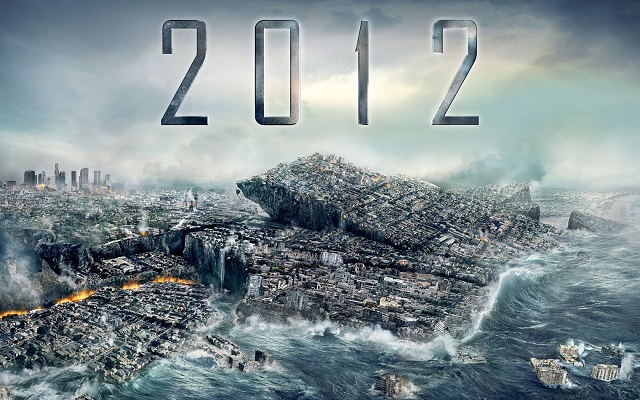
2012 (2009) – Disaster movies are all about an impending doomsday and so we’ve seen the list of catastrophic tsunamis, earthquakes, tornadoes, man-made disasters, climatic assaults and even alien invasions but Roland Emmerich who is no stranger to the cinematic disaster-genre pushes the envelope with the inevitable ‘Doomsday’ movie, 2012. This is not just tsunamis or tornadoes or even man-made disaster, this is the end and as rightfully tagged, ‘The Mother of all Disaster Movies’.
Breathtaking visuals, incredible visual effects and in there an intertwined plot of a writer-cum- driver who struggles to keep his family alive amidst all hell breaking loose and the annihilation of mankind.
Employing over 100 artists to create over 1300 VFX shots including those of the calamities of tsunamis, volcano eruptions, earthquakes that rips California apart and plunges into the Pacific, 2012 delivers a master-piece that will leave you spell-bounded.
Artists from Uncharted Territory molded a photorealistic virtual version of the city blocks and the live-action plate was filmed using Panavision Genesis digital cameras against a blue-screen which was later rendered into the animated imagery.
From story-boarding to pre-visualization process to building 3D models and finally rendering the plates into final shots, the entire film-making process and technique for 2012 was taken to another level with production costs shooting to $200 million. The movie swooped over $769 million world-wide and won the Satellite Award for Best Visual Effects.
With Hollywood beefing up its list of successful disaster movies with cutting-edge technology and techniques, filmmakers all across (including Bollywood) could take some cues and spin some over-whelming productions on similar lines. Way to go!
